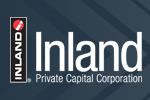Sponsored: Inland’s Keith Lampi on 1031 Exchanges
Section 1031 of the Internal Revenue Code allows an investor to defer the payment of capital gains taxes that may arise from the sale of a business or investment property. Keith Lampi, president of Inland Private Capital, discusses how 1031 exchanges began, the evolution of the industry, and certain guidelines for 1031 exchanges in the video below.
Advisors looking for similar educational videos, should visit The Inland Academy: www.1031advisorsolutions.com
Inland Private Capital Corporation is a sponsor of The DI Wire, and the content was published as part of their standard directory sponsorship package.
Video Transcript
Keith Lampi 00:10
Hi, I’m Keith Lampi president of Inland Private Capital and I have the pleasure of sharing details about 1031 exchange transactions through Inland Academy.
Let’s begin by discussing how 1031 exchanges began the evolution of the industry and the current status of this tax deferred real estate transaction. Section 1031 of the Internal Revenue Code provides an alternative strategy for deferring the capital gains tax that may arise from the sale of business or investment property by exchanging real property for like kind real estate property owners may defer federal tax obligations and apply all of the proceeds toward the purchase of replacement property. 1031 exchanges can trace their routes back to the revenue act of 1921 when the US Congress created a section in the Internal Revenue Code allowing investors to exchange securities and non light kind property with certain restrictions. There were several modifications to the provision in the revenue act over the next few decades and in 1954 the federal tax code was amended to adopt the present day tax deferred like kind exchange rules.
It took more than 35 years however before the department of treasury issued its final rules and regulations in 1991 and they have largely remained intact since then. So, in practice what are examples of like kind real estate that qualify as 1031 exchanges today? These include wholly owned assets such as vacant land, commercial rental property, commercial property, industrial property 30 year or more leasehold interest, farm property, residential rental property or a doctor’s own office. There are also fractionally owned assets that qualify under 1031 rules including beneficial interests in Delaware statutory trusts or DST’s, tenant and common interest in investment property.
It’s important to note that both relinquished and replacement properties must have been held for investment purposes or for productive use in a trade or business. A primary residence does not qualify for a 1031 exchange. Also, whether any particular transaction will qualify under section 1031 depends on the specific facts involved including but not limited to the nature and use of the relinquished property and the method of its disposition the use of a qualified intermediary and a qualified exchange escrow as discussed in more detail on the following slides and the lapse of time between the sale of the relinquished property and the identification and acquisition of the replacement property
For more Inland Private Capital news, please visit their directory page.

